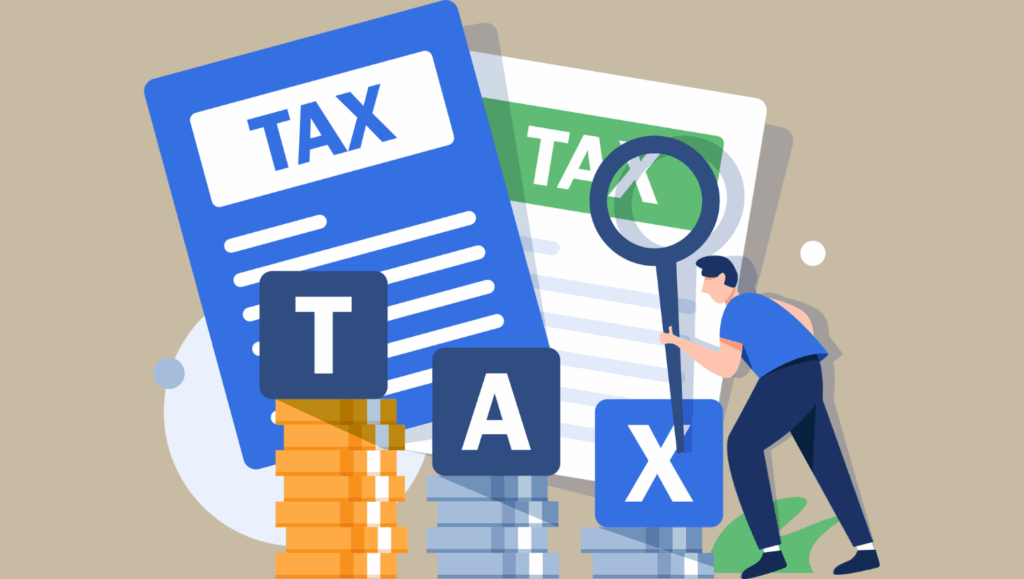
Did you know a single overlooked bank deposit could trigger a tax nightmare under India’s Income Tax laws? Enter Section 148A—the 2021 game-changer with 2025 twists that shields taxpayers from arbitrary reassessments but hides pitfalls for the unprepared. What if your old ITRs are reopened without warning?
In the ever-evolving landscape of Indian taxation, staying informed about key provisions like Income Tax Section 148A is essential for salaried professionals, entrepreneurs, and freelancers alike. Introduced through the Finance Act of 2021, this section has brought a wave of transparency to reassessment procedures, protecting taxpayer rights while ensuring revenue protection for the government. As we navigate 2025, with recent CBDT clarifications and Finance Bill 2024 amendments refining timelines, understanding Section 148A has never been more critical. This comprehensive guide, written from an Indian taxpayer’s viewpoint, delves deep into the intricacies of reassessment notices, procedural safeguards, and practical strategies to handle them confidently.
Whether you’re a Mumbai-based IT consultant dealing with freelance income discrepancies or a Delhi entrepreneur facing audit mismatches, Section 148A empowers you with the right to be heard before any reassessment under Section 148 kicks in. We’ll explore its origins, mechanics, updates as of September 2025, common triggers, and actionable tips, all woven with real-world narratives from everyday Indians. By the end, you’ll be equipped to maintain compliance and avoid pitfalls in India’s dynamic tax environment.
What is Income Tax Section 148A?
At its core, Income Tax Section 148A serves as a protective shield for taxpayers during the reassessment process under the Income Tax Act, 1961. Prior to its introduction in April 2021, Assessing Officers (AOs) wielded broad powers under Section 148 to reopen tax assessments if they suspected escaped income—often leading to surprise notices and prolonged disputes. This left many honest taxpayers, like Rajesh from Bangalore, a small business owner, scrambling to defend years-old filings without prior warning.
Section 148A mandates a preliminary inquiry, ensuring the AO conducts due diligence before issuing a formal reassessment notice. It’s essentially a “show-cause” mechanism where the taxpayer gets an opportunity to respond to allegations of escaped assessment. This aligns with the principles of natural justice, a cornerstone of Indian jurisprudence, emphasizing fairness and transparency in administrative actions.
From an Indian perspective, this provision resonates deeply in a country where tax compliance is improving but historical perceptions of arbitrary enforcement linger. According to the latest 2025 CBDT data, over 2.5 million reassessment inquiries were initiated last fiscal year, but Section 148A filtered out nearly 40% as unwarranted after taxpayer responses—highlighting its role in reducing harassment.
Key elements include:
- Credible Information Requirement: The AO must base the inquiry on verifiable data, not mere suspicion.
- Taxpayer Response Window: Typically 7-30 days to submit explanations.
- No Automatic Reopening: If the response satisfies the AO, the matter ends there.
Synonyms like “pre-reassessment inquiry” or “escaped income probe” often appear in tax forums, enhancing semantic relevance for searches on taxpayer protections in India.
Why was Section 148A Introduced?
The genesis of Section 148A stems from widespread complaints about opaque reassessment practices pre-2021. Taxpayers frequently faced notices years after filing, triggering anxiety and legal costs. Take the case of Priya, a Hyderabad-based teacher, who in 2019 received a Section 148 notice for a minor bank deposit mismatch from 2015—leading to months of back-and-forth without initial clarity.
The Finance Act 2021 aimed to overhaul this by embedding procedural fairness. Objectives include:
- Evidence Verification: AOs must substantiate claims, preventing frivolous actions.
- Opportunity to be Heard: Formal show-cause notices uphold audi alteram partem (hear the other side).
- Harassment Prevention: Streamlined processes reduce undue stress on compliant citizens.
- Revenue-Taxpayer Balance: While safeguarding government interests, it promotes voluntary compliance.
In 2025, with India’s economy booming at 7.2% GDP growth (per RBI estimates), such reforms are vital. CBDT reports show a 25% drop in reassessment litigations since 2021, attributing it to Section 148A’s safeguards. This shift mirrors global trends, like the US IRS’s advance notice requirements, but tailored to India’s federal structure and diverse taxpayer base.
The Future of Crypto? PEP-20’s Memes on Bitcoin Raises $2.8M in Record Time
What is the surprising ripple effect of RBI’s approval of Junio Payments that most Indians don’t yet realize?
HDFC vs SBI Current Account: Which is Best for Your Business in 2025?
Interest Rates: SBI vs HDFC – Who Offers Better Returns in 2025?
How Does Section 148A Work? Step-by-Step
Understanding the operational flow of Section 148A demystifies the process, making it less intimidating. Let's break it down with a hypothetical scenario: Imagine Amit, a Pune freelancer, whose 2022 ITR shows income lower than bank credits suggest.
Step 1: Receipt of Information Suggesting Escaped Income
The process begins when the AO receives "information" indicating potential under-reporting. Sources include:
- Third-party reports (e.g., Form 26AS mismatches).
- Audit findings from GST or internal reviews.
- International agreements via Automatic Exchange of Information (AEOI).
- Surveys under Section 133A.
In 2025, with digitized tax systems, AI-driven risk management flags over 1 million such cases annually, per Income Tax Department stats.
Step 2: Preliminary Inquiry by Assessing Officer
The AO issues a show-cause notice under Section 148A(b), detailing reasons and evidence. Amit would receive this via email or the e-filing portal, with a response deadline.
- Notice Content: Specific allegations, like "Unexplained deposits of Rs 5 lakh in AY 2022-23."
- Response Time: 7-30 days; extensions possible for valid reasons, e.g., health issues.
- Inquiry Scope: Limited to verifying if reassessment is warranted.
This step ensures no knee-jerk actions, as seen in pre-2021 cases.
Step 3: Consideration of Taxpayer's Explanation
Amit submits documents—bank statements proving the deposit was a loan repayment. The AO reviews this under Section 148A(d), potentially seeking clarifications.
If convinced, the inquiry closes. If not, it proceeds.
Step 4: Decision and Approval
For high-value cases (escaped income > Rs 50 lakh), principal commissioner approval is needed. Then, a Section 148 notice issues, starting reassessment.
This structured approach, refined by 2025 CBDT circulars, emphasizes documentation and timelines.
Important Updates and Timelines
The Finance Bill 2024 and recent CBDT guidelines have introduced further clarity on Section 148A procedures:
- For cases where the escaped income is Rs 50 lakh or more, the AO must issue the 148A notice within five years and three months from the end of the relevant assessment year.
- For incomes below Rs 50 lakh, the timeline is limited to three years and three months.
- The deadline for issuing the notice for AY 2019-20 with income over Rs 50 lakh has been fixed as 30 June 2025.
- The procedure applies differently depending on the source of information (e.g., risk management data, surveys, court orders), reinforcing procedural rigor.
These timelines aim to enhance certainty while giving taxpayers and tax authorities adequate time for due diligence.
Common Scenarios When Section 148A is Invoked
- Mismatch in Income Reports: If third-party data such as bank transactions or employer TDS records do not match the taxpayer's filed return.
- Audit Objections: When audit or GST findings indicate possible under-reporting or non-disclosure of income.
- Information from Search/Survey: If a survey under Section 133A uncovers inconsistencies, Section 148A requires the AO to follow procedural safeguards before reassessment.
- Court or Tribunal Orders: Directions from judiciary bodies may also trigger reassessment inquiries.
Key Rights and Responsibilities for Taxpayers
- Right to be Heard: Taxpayers must receive show-cause notices and be given a reasonable opportunity to respond.
- Extension Requests: Taxpayers can request additional time to prepare and present their case.
- Submission of Evidence: Documentation, reconciliations, and explanations supporting the original return must be shared comprehensively.
- Professional Assistance: Engaging a Chartered Accountant or tax advisor can help frame responses and navigate the reassessment process expertly.
Consequences of Non-Compliance
Ignoring or failing to respond to a Section 148A notice can lead to severe consequences:
- The AO may proceed with an ex-parte assessment, ignoring the taxpayer’s explanation.
- Additional tax liabilities may be calculated along with interest and penalties.
- In cases of willful evasion, prosecution and imprisonment are possible.
Prompt compliance and communication with tax authorities are critical to mitigating adverse outcomes.
What Should Taxpayers Do if They Receive a Section 148A Notice?
- Read the Notice Carefully: Understand the reasons cited by the AO for reassessment.
- Gather Documents: Collect all relevant proofs such as bank statements, invoices, and audit reports.
- Consult Experts: Engage a tax professional to review the notice and prepare a detailed response.
- Respond Timely: Submit your explanation within the stipulated timeframe or request an extension proactively.
- Prepare for Further Proceedings: Even after submission, be ready for possible reassessment or hearings.
Section 148A vs Section 148: Understanding the Difference
| Aspect | Section 148A | Section 148 |
| Purpose | Preliminary inquiry before reopening assessment | Formal reassessment notice issuance |
| Taxpayer's Opportunity | Opportunity to respond before notice under 148 | Notice issued after 148A procedure |
| Time Limits | Time-bound for issuing notice (depending on income) | Follows after 148A, within assessment limits |
| Procedural Safeguards | Mandatory show-cause notice and hearing chance | Notice issued if AO satisfied after 148A |
Final Thought
Taxation in India continues to evolve with a growing focus on transparency, fairness, and taxpayer rights. Section 148A symbolizes this positive shift by ensuring taxpayers have a chance to clarify before facing reassessment under Section 148. Being informed about these provisions, staying compliant, and addressing tax notices systematically can significantly reduce stress and potential liabilities.
As the 2025 updates refine timelines and procedures further, taxpayers must stay vigilant, maintain proper records, and seek professional advice when necessary. Proper understanding of Section 148A is not only essential for compliance but also for safeguarding your financial peace of mind in today’s dynamic tax landscape.
































